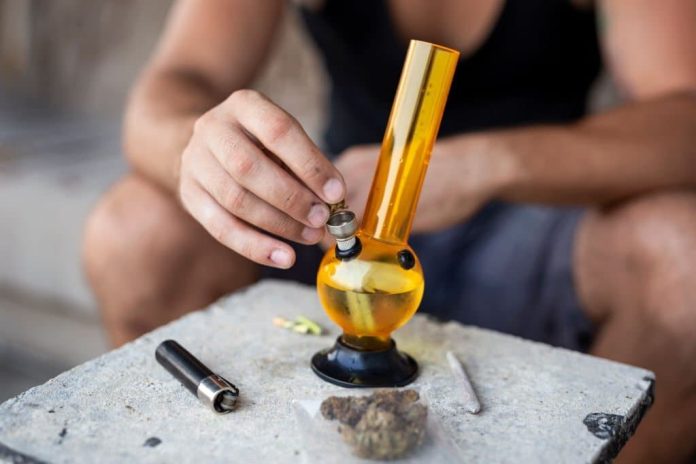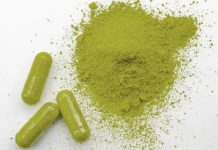One of the most acceptable ways to draw on and enjoy cannabis is by using a bong. These nifty devices offer many advantages to smokers, such as a unique design and purpose to fit your exact needs. They also have superior filtration systems and chill the smoke for an ultra-smooth hit. Many smokers even claim they’re superior to other vaping devices.
Regardless, there are still some risks to smoking bongs and twice as many myths concerning their usage. But, if you do it moderately – you should be ‘flying’ high safely.
In this article, we will explain how a bong works, what are the benefits of using it, and all of the risks and myths surrounding this marvelous invention.
Table of Contents
How Do Bongs Work?
Not two bongs are the same. In this full bong guide, you will learn that they come in various forms, styles, and sizes. Some are incredibly simple in their design, with merely a bowl and chamber; others are colorful, eye-catching centerpieces.
Ultimately, they all accomplish the same goal – they filter and chill the smoke produced when the cannabis burns. The burning of cannabis happens through combustion.
It is common for bongs to include a tiny bowl for storing dried marijuana. Besides this, bongs also have percolators, which help the water bubble as you inhale it. Before it reaches your mouth and lungs, the smoke rises through the water and into the chamber.
Components of a Bong
Due to the appearance of different types of bongs, we’ll look at some essential components (that some bongs have, and some may not):
- The Base: The bong’s base stores and contains the water found at the bottom. The base can take many shapes and sizes, like flared or non-flared. However, the most recurrent form is that of a beaker, with a flared bottom for ease of use.
- The Tube: One of the most distinctive features of a bong is its tube, which serves as a chamber for cannabis smoke before it enters your lungs.
In terms of look, this is the only component that doesn’t ever vary from its cylindrical shape. Nonetheless, the thickness can change.
- The Carburetor: You may have heard of it as “carb,” but it’s crucial to understand this component since it serves a fundamental purpose. The carb is a little hole you can cover on the glass pipe with your finger to clear the smoke.
So, if you have a glass bong, you’ll want to do the following. Cover the carb hole while drawing your hit. You only want to absorb the first half.
Release your finger as you inhale the other half, and the air will travel via the carb.
- The Stem: A tiny, transparent tube that passes from the bowl to the bong’s tube. Many bongs feature one-of-a-kind stems that enable them to do more than simply using a cigarette or a joint in your mouth.
The stem of certain bongs serves as the water reservoir, eliminating the need for a broader, flared base. It is also possible to see the bong’s next important component by removing the stem from its hole.
- The Bowl: This is where you’ll find the dried cannabis ready to combust. This is how it works – you put the cannabis inside the bowl and light it. Once it combusts, it’s ready for filtering and cooling for a perfectly smooth hit. You can always add other herbs of your preference.
Is the Smoke From a Bong More Potent Than a Joint?
Anecdotal evidence suggests that smoking a bong produces more intoxication than smoking a joint. The idea is that a bong is more potent than a joint or blunt to get people euphoric because the chamber allows users to take more significant hits.
Although the theory is logical, no scientific evidence supports it. That is primarily due to the lack of research on the topic.
MAPS conducted research in 1996 to see how various marijuana ingestion techniques affected the amount of THC in the plant. According to the study, THC was more concentrated in unfiltered joints than in water pipes.
The latter suggests that bong hits may not be as potent as many smokers claim. There simply isn’t sufficient information to draw meaningful judgments and confirm the theory.
Nonetheless, the cooled smoke of a bong provides a smoother hit than a joint’s. Smokers who prefer bongs report reduced irritation to the throat and lungs due to their usage.
Benefits of Using a Bong
The bong’s capacity to chill and filter the smoke via water entices individuals to use it, even when they inhale a large quantity of smoke. A bong’s benefits over other ways of ingestion might vary.
In addition, bongs give the cooling percolation of a bong while preserving the strong scent and taste of cannabis. Compared to smoking out of a dry pipe, a bong provides a smoother, less harsh experience that is less irritating to the throat and lungs.
Finally, we can compare bongs to bubbles – types of water pipes. Bubblers are convenient like hand pipes but have the water percolation capabilities of a water pipe.
However, as functional as they are, the tiny components of a bubbler are more susceptible to clogging or being clogged – unlike with bongs.
Final Say on the Matter
Bongs made by professional bong designers may now fetch thousands of dollars – and it’s no surprise given how advanced they’ve become. Therefore, they are more beneficial in multiple ways than other types of vaping devices, like joints.
For example, a bong’s simplicity of usage is a significant selling point. All you have to do is add water to cover the downstem and compress the dried flower into the dish. Inhale the smoke from the mouthpiece while standing near it – and voila!
Nonetheless, you should always mind your health and track your bong usage. Research shows that holding in bong smoke for a lengthy period has no health benefits, and overuse can damage the lungs. So, remember – moderation is key!




